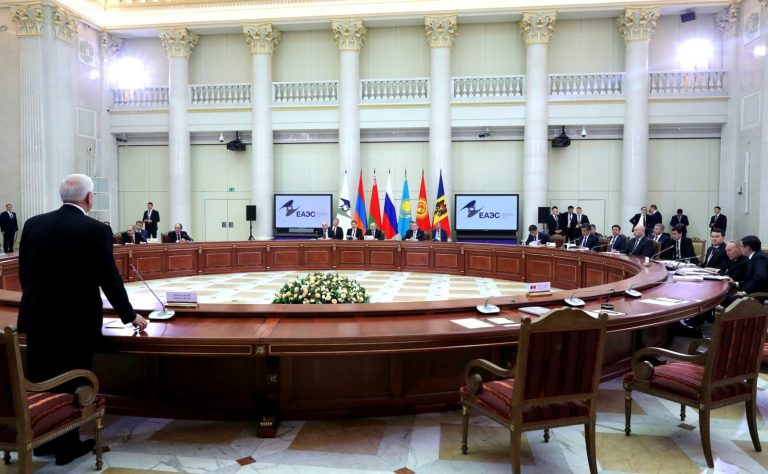In 2020 the EAEU stands on the verge of a severe economic downfall that raises questions about the project effectiveness. If earlier the EAEU’s major problems were protectionist disputes between its members and a different vision of the integration depth, the actual key problem is a slump mutual trade. Generally, against the background of exports decline, the effectiveness of the geo-economic mechanism in the new conditions poses the question.
Within five months of 2020 the total volume of foreign trade in goods between the Eurasian Economic Union member states and third countries amounted to $246.7 billion, including goods export – $150.6 billion and import volume – $96.1 billion. At the same time, the economic fall dynamics looks alarming. The volume of foreign trade turnover decreased by 16.2% ($47.7 billion), export – by 20.8% ($39.4 billion), import – by 7.9% ($8.3 billion). The largest export decrease fell on Belarus (-31.2%) and the Russian Federation (-22.7%). As for Kazakhstan and Armenia the export drop for them was not so significant (-3.9% and -6%, respectively). Kyrgyzstan is the only member state where exports increased (+10.5%), however, import to the country fell by a record 46.8%.
Such a significant trade turnover decrease is explained by two key factors – the energy prices fall and the economic consequences caused by the COVID-19 pandemic. In a meantime, mutual internal trade could not cover for the losses from the export sharp collapse. The volume of export deliveries in mutual trade of the EAEU member states amounted to $20 billion that is 15.2% less than in January-May 2019.
Kazakhstan experiences the largest decline – -19.4%. However, it is worthwhile noting that in view of the current conditions official Astana demonstrated a virtually minimal decline in exports to third countries. Kazakhstan managed to increase the goods export to Armenia; however, given the small volumes, it made no significant contribution to the economic situation.
Russia’s export to the EAEU countries, whose share is the most significant and reaches 61.6%, decreased by 18%. At the same time, the most major decline was recorded in Belarus (-30.4%). Actually, it does not surprise taking into account the geopolitical and geoeconomic crisis in relations between partners during the mentioned time period. The export was increased only to Armenia, however, just the same as in the case of Kazakhstan, the supplies volume has no impact on the larger picture.
The decline in exports of small-scale economies such as Kyrgyzstan and Armenia was fixed nearly at the same level (-18.9% and -13.7%, respectively). In a meantime, Armenia has managed to increase supplies to Belarus, and Kyrgyzstan to Armenia. However, these local successes did not change the situation a lot because of insignificant volumes.
Belarus’ export to the EAEU states with share in mutual trade of 26.4% was affected the least. It decreased by 5.8%, however, the most major decline was recorded in logistically remote states such as Kyrgyzstan (-52.1%) and Armenia (-16.9%).
One of the conceptual ideas for the EAEU functioning is the creation and effective working of the internal market. On the creators’ concept, it would allow the organization to become more sustainable and independent on the world market volatility. This goal has not been achieved. The first systemic crisis demonstrated clearly that the decline in foreign trade and inside the organization is virtually the same taken into account geographical neighborhood of markets. Roughly said, the mutual trade figures would be nearly the same even if the EAEU did not exist.
We think that in the nearest future the export decline tendency and the volume of internal trade decrease in the EAEU will continue. Deepening economic crisis within states and reduction of the consumer purchasing power will make this tendency more that real. As of now the economies of Kyrgyzstan, Belarus and Russia are being jeopardized the most. It is quite probable that the analysis of the mutual trade results at the end of 2020 may become one more reason for Minsk and Astana to reduce their membership participation level in the project.




